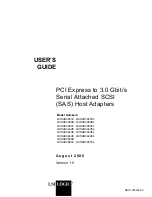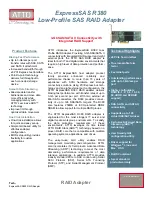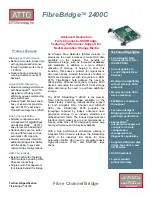
9
Changing MRS-485 settings
The DIP switches are to set the Modbus address and are also used to change the MRS-485 settings. Valid Modbus addresses are
between 1 and 247 where switch 1 is the least significant bit (LSB) and switch 8 is the most significant bit (MSB). Address 254 is
used to place the MRS-485 in programming mode and the rest of addresses (248 to 253, 255, 0) are invalid MODBUS addresses.
Programming Mode
When the address is set to 254 the MRS-485 enters programming mode and the LED pattern: Alternating RED/GREEN every 200
milliseconds, indicates that the MRS-485 is ready and waiting for the user to enter new settings using the 8 switches. Using the 8
switches the user can change the communication settings like baud rate and parity as well as the registration behaviour.
When looking at the switches with the “Address” marking on top, the switches are defined from left to right as:
-
Switch 8, switch 7 and switch 6 are used to modify baud rate
-
Switch 5 and switch 4 are used to modify parity
-
Switch 3 and switch 2 are used to modify registration mode
-
Switch 1 is used to request to save the new settings
Switch 8
Switch 7
Switch 6
Description
OFF
OFF
OFF
Default baud rate (19200 Bd)
OFF
OFF
ON
4800 Bd
OFF
ON
OFF
9600 Bd
OFF
ON
ON
19200 Bd (Default value)
ON
OFF
OFF
38400 Bd
ON
OFF
ON
57600 Bd
ON
ON
OFF
115200 Bd
ON
ON
ON
Do not change
Switch 5
Switch 4
Description
OFF
OFF
Default parity (EVEN)
OFF
ON
Parity is ODD
ON
OFF
Parity is NONE
ON
ON
Do not change
Registration mode can be latched or unlatched. MRS-485 is always using data from a valid registration but when registration is
latched it will also compare the saved value with the new one and set a flag if it is different. This way, by reading the flag, you can
check if it is a different sensor type and you always get data about the sensor present.
Switch 3
Switch 2
Description
OFF
OFF
Default registration mode (Registration not latched)
OFF
ON
Registration not latched (Default value)
ON
OFF
Registration is latched
ON
ON
Do not change










































